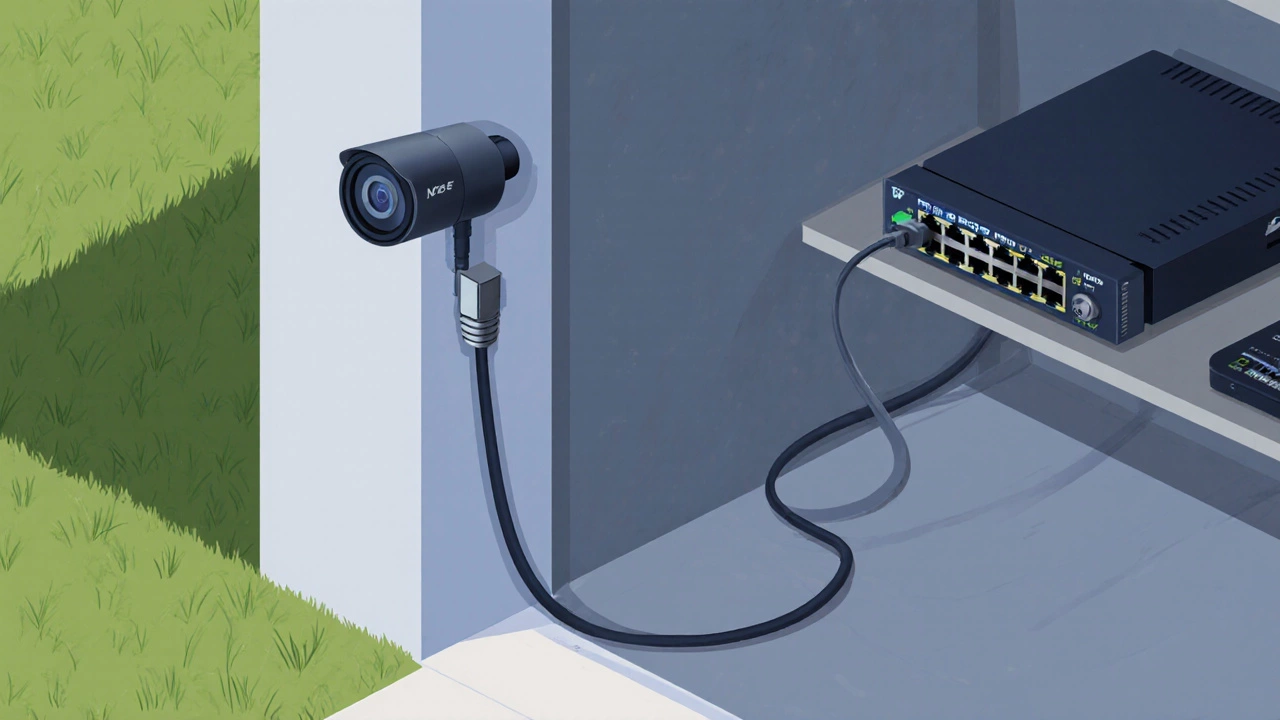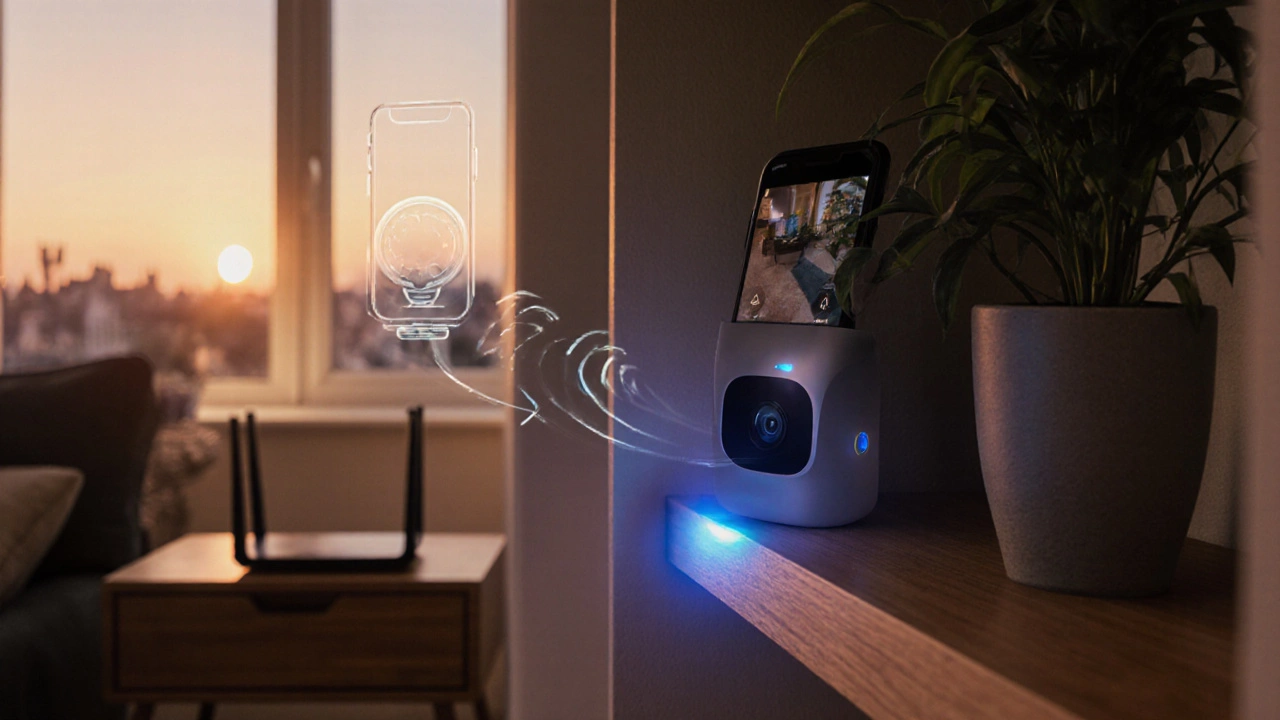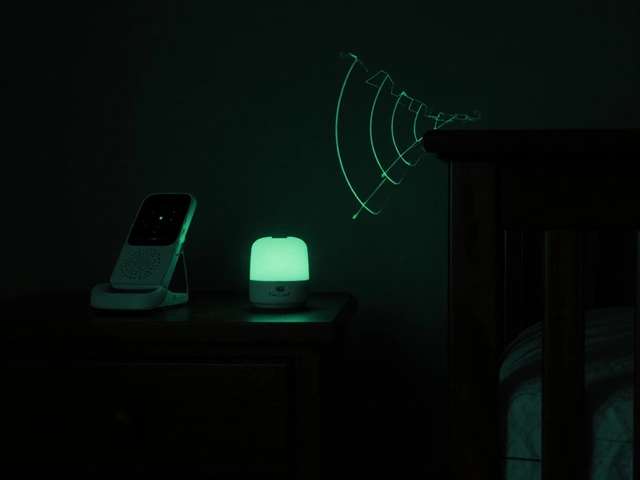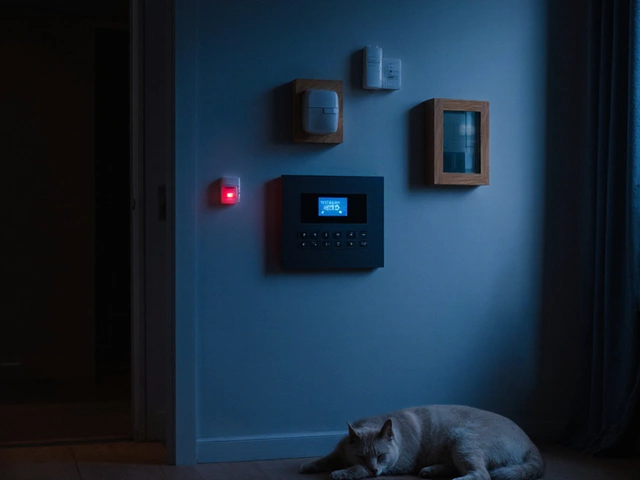Security Camera Connection Selector
Wi-Fi Cameras
Easy to install, remote access, great for smart-home integration.
PoE Cameras
Reliable, high-performance, ideal for professional setups.
Select Your Setup Preferences
Recommended Connection Type
When you start looking at home surveillance, the first question that pops up is whether every security camera has to rely on Wi‑Fi. The short answer is no-there are several ways to power and transmit video, each with its own trade‑offs. Let’s break down the options, why they exist, and how to pick the right one for your property.
What Exactly Is a Security Camera?
Security camera is a device that records video footage for monitoring and deterrence. Modern models range from tiny indoor pins to rugged outdoor boxes with night vision, and they can store footage locally, on the cloud, or both.
Wi‑Fi Cameras: How They Work
Wi‑Fi refers to the set of wireless networking standards (IEEE 802.11) that let devices talk to a router over radio waves. A Wi‑Fi security camera connects to your home router, gets power (usually via a plug‑in adapter or USB), and streams video in real time to your phone or a cloud service.
Key benefits of Wi‑Fi cameras include:
- Very easy installation-no cables run between the camera and your router.
- Remote access from anywhere with an internet connection.
- Seamless integration with smart‑home ecosystems and voice assistants.
But there are downsides too. Wi‑Fi bandwidth is shared with all other devices, so a high‑resolution stream can slow down your network, especially on a 2.4GHz band. Signal strength can degrade over distance or through thick walls, leading to dropped frames or dead zones.
Wired Options: Ethernet, PoE, and Traditional CCTV
For those who want a rock‑solid connection, wired alternatives are still popular.
Power over Ethernet (PoE) delivers both data and electrical power over a single Ethernet cable lets you place a camera up to 100m away from the recorder without needing a separate power outlet. PoE cameras pair with a PoE switch or injector, which in turn connects to a Network Video Recorder (NVR) a device that stores and manages video streams over a network. This setup is common for professional‑grade home security because it offers consistent bandwidth and reliable power.
Older systems still use plain Ethernet or coaxial cable linked to a Digital Video Recorder (DVR) which records analog video signals from CCTV cameras. While DVRs are less flexible-no IP streaming, limited resolution-they can be cheaper for large analog installations.
Advantages of wired cameras include:
- Stable, low‑latency video feed.
- Higher resistance to interference and hacking (no over‑the‑air signals to sniff).
- Power can be delivered over the same cable (PoE), reducing clutter.
Drawbacks are the need for cable routing, which can involve drilling and higher installation costs.

Local vs Cloud Storage: Where Does Your Footage Go?
Regardless of connection type, you need a place to keep the video. Two main approaches dominate:
- Cloud storage stores video on remote servers accessed via the internet. Most Wi‑Fi cameras bundle a subscription that uploads clips for you. The upside is automatic backup and easy sharing. The downside is recurring fees and reliance on the provider’s security.
- Local storage (SD card, NVR, or DVR) keeps video on hardware located at your premises. This eliminates monthly costs and gives you full control, but you must manage backups yourself and ensure the hardware isn’t tampered with.
Choosing the Right Connection for Your Home
Here’s a quick decision matrix. Ask yourself the following questions:
- Do you need a camera in a spot with no power outlet? Wi‑Fi or battery‑powered models are the only choices.
- Is your Wi‑Fi network already saturated? A wired PoE camera will keep bandwidth free for streaming services.
- Are you comfortable paying a subscription for cloud features? If not, plan for local storage.
- Do you want the camera to work with Alexa, Google Home, or Apple HomeKit? Most Wi‑Fi cameras have built‑in integrations; PoE cameras may need a hub.
Based on the answers, you can narrow down to three common setups:
- Wi‑Fi + cloud (quick install, low upfront cost).
- PoE + NVR (higher upfront, no monthly fees, professional‑grade reliability).
- Hybrid (Wi‑Fi for indoor rooms, PoE for front door and garage).
Comparison Table: Wi‑Fi vs PoE vs Wired Ethernet
| Feature | Wi‑Fi | PoE | Wired Ethernet (non‑PoE) |
|---|---|---|---|
| Installation effort | Minimal - plug into outlet & connect to router | Moderate - run Ethernet cable, connect to PoE switch | High - run cable, separate power source needed |
| Power source | Adapter or battery | Power supplied over Ethernet | Dedicated power outlet |
| Bandwidth usage | Shares home Wi‑Fi (can cause congestion) | Dedicated gigabit Ethernet, stable stream | Dedicated Ethernet, stable stream |
| Signal reliability | Subject to interference & distance limits | Very reliable - cable shielded | Very reliable - cable shielded |
| Cost (hardware) | Low - most models $30‑$150 | Higher - PoE cameras $80‑$250 + switch | Variable - similar to PoE but adds power adapters |
| Integration with smart homes | Native support for Alexa/Google Home | Often needs a hub or NVR with API | Same as PoE |

Security Concerns: Encryption and Hacking Risks
Any camera that talks over a network is a potential target. Here’s what to look for:
- End‑to‑end encryption (AES‑256 is common). Wi‑Fi cameras should list it in the spec.
- Secure passwords and two‑factor authentication for the camera’s app.
- Regular firmware updates - manufacturers often patch vulnerabilities.
- For PoE/NVR setups, keep the recorder on a separate VLAN to isolate it from guest Wi‑Fi.
Wired analog CCTV is less likely to be hacked remotely, but physical tampering remains a risk. Use tamper‑evident screws and place the recorder in a locked cabinet.
Future Trends: 5G, Edge AI, and Battery‑Free Cameras
Industry analysts predict that by 2026, low‑power 5G modules will enable edge‑AI cameras which process motion detection locally, sending only relevant clips to the cloud. This reduces bandwidth and privacy concerns. Another emerging category is solar‑powered cameras that combine PoE‑style reliability with truly wireless power.
While the fundamentals-Wi‑Fi vs wired-won’t disappear overnight, the line between them is blurring as hybrid devices adopt multiple connectivity options.
Quick Checklist Before You Buy
- Determine the power outlet situation at the mounting spot.
- Check your router’s capacity (2.4GHz vs 5GHz) and plan for bandwidth.
- Decide on storage: cloud subscription vs local NVR/DVR.
- Verify encryption (AES‑256) and support for two‑factor auth.
- If you want smart‑home voice control, confirm compatibility with Alexa/Google Home.
- Consider future expandability-PoE switches make adding cameras easy.
Frequently Asked Questions
Do Wi‑Fi cameras work if the internet goes down?
Yes. Most Wi‑Fi cameras continue recording to local SD cards or to an NVR on the same LAN. However, you won’t get remote alerts or live view until the internet is back.
Can I mix Wi‑Fi and PoE cameras on the same system?
Absolutely. Modern NVR software accepts both IP streams over Ethernet and wireless streams from Wi‑Fi cameras, letting you use the best technology for each location.
Is a PoE camera more secure than a Wi‑Fi camera?
Generally, yes. Because it doesn’t broadcast over the air, a PoE camera is less exposed to Wi‑Fi sniffing attacks. Still, you must secure the NVR and network with strong passwords and VLAN segmentation.
How much bandwidth does a 1080p Wi‑Fi camera use?
A 1080p stream typically consumes 2‑4Mbps when broadcasting continuously. Motion‑activated recording can cut that down to under 1Mbps on average.
Do I need a special router for multiple security cameras?
A modern dual‑band router with QoS (Quality of Service) is sufficient for a few cameras. For larger setups (10+ cameras), a dedicated gigabit switch or a small business router is recommended.




